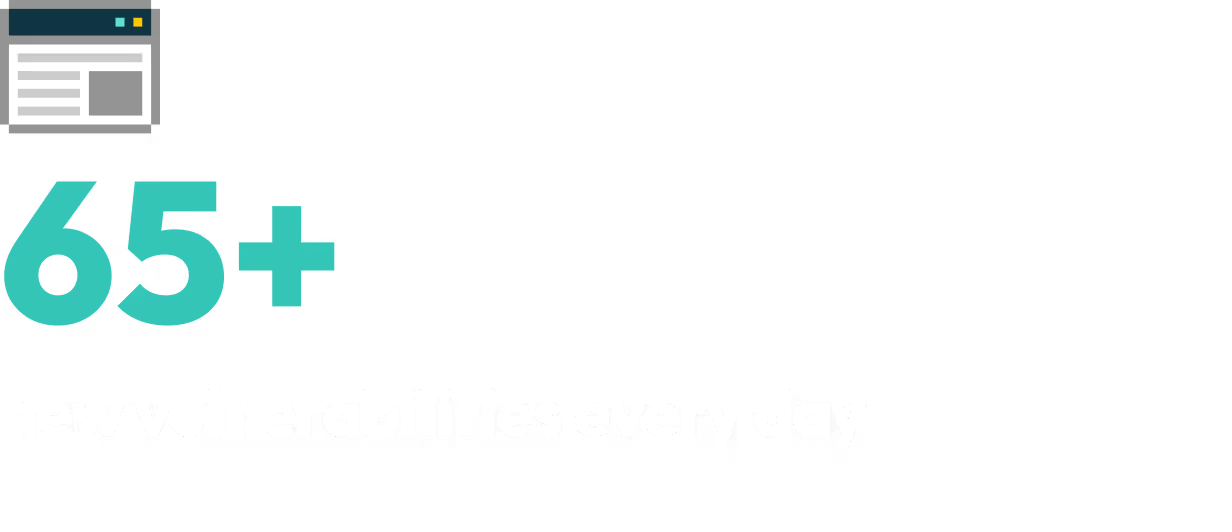Website Vulnerability Scanner
Secure your website from today's biggest threats, and automatically stay ahead of tomorrow's. Effortless, continuous vulnerability scanning that prevents downtime.
Scan your website for vulnerabilities with ease
Your website is undergoing changes all the time, even without your knowledge. Plugins are being updated, different users are logging in to make edits, and the systems your site uses are being modified too. Intruder’s website vulnerability scanner finds and alerts you to vulnerabilities so you can fix them before they’re exploited.

Trusted by thousands of companies worldwide































































Test your website’s security inside and out
We find and help you fix critical risks like SQL injection and exposed databases across your entire infrastructure. For WordPress sites, our 30,000+ specialized checks detect hidden flaws in your WordPress, its plugins and themes before they can be exploited. Secure your login-protected areas and prevent downtime with automatic SSL alerts.


Save time with automated website security scanning
Schedule recurring website scans at flexible intervals. Proactive emerging threat scans notify you as soon as new vulnerabilities are discovered. Intruder intelligently prioritizes your results and provides remediation advice.
Integrations that accelerate remediation
Integrate Intruder with your CI/CD pipeline to automatically find weaknesses earlier in the development lifecycle. Keep on top of important changes to your website’s security with notifications via Slack, Teams, or email.

Gotta catch ‘em all
Automated scanning can help you identify most issues in your website, but manual testing helps to close any additional gaps.
With Intruder's continuous penetration testing service, our experienced penetration testers check your systems for critical vulnerabilities, including ones that are not detectable by automated scanners.

How often should you scan?
The time between a vulnerability being discovered and hackers exploiting it is narrower than ever – just 12 days. We explain why continuous vulnerability scanning has become essential and how you can best implement it.


Read our reviews on G2.com





Yes, you can! Learn all about how to scan SPAs with Intruder here.
The first thing you need to do is add your website as a target by entering its IP address or url. You can then kick off your first scan in just a few clicks – it’s that simple!
Intruder’s website security scans check for web-layer security problems such as SQL injection and cross-site scripting, as well as other security misconfigurations. Read more about Intruder’s checks here.
Your internal systems can be just as enticing to hackers as your external network so it’s important to test your website for vulnerabilities there too.
When we talk about scanning the website internally, we’re actually talking about scanning the web server that the website is hosted on. Web servers are internet-facing, but any sensitive information connected to them (such as databases) will sit behind a firewall, to prevent them from being reached by unauthorized individuals.
If ‘stuff’ can’t be reached externally, then remote checks won’t work and so you’d need to run local checks. At Intruder, all local/internal checks are performed via an agent which you’d install on the server.
Internal vulnerability scanning also hunts through your website for missing patches and detects insecure versions of many thousands of software components and frameworks, including operating systems and network devices. Find out more about internal vulnerability scanning.
Intruder works with many platforms, including WordPress, Drupal, Joomla, Squarespace and more.
Choose our Essential or Cloud plan to externally scan your website. If you are looking at our internal vulnerability scanning capability, this is only available to our Pro and Enterprise customers. Visit our pricing page to learn more.
Buy any of our Essential or Pro plans that cover infrastructure licenses by default. Head to our pricing page for more information.




